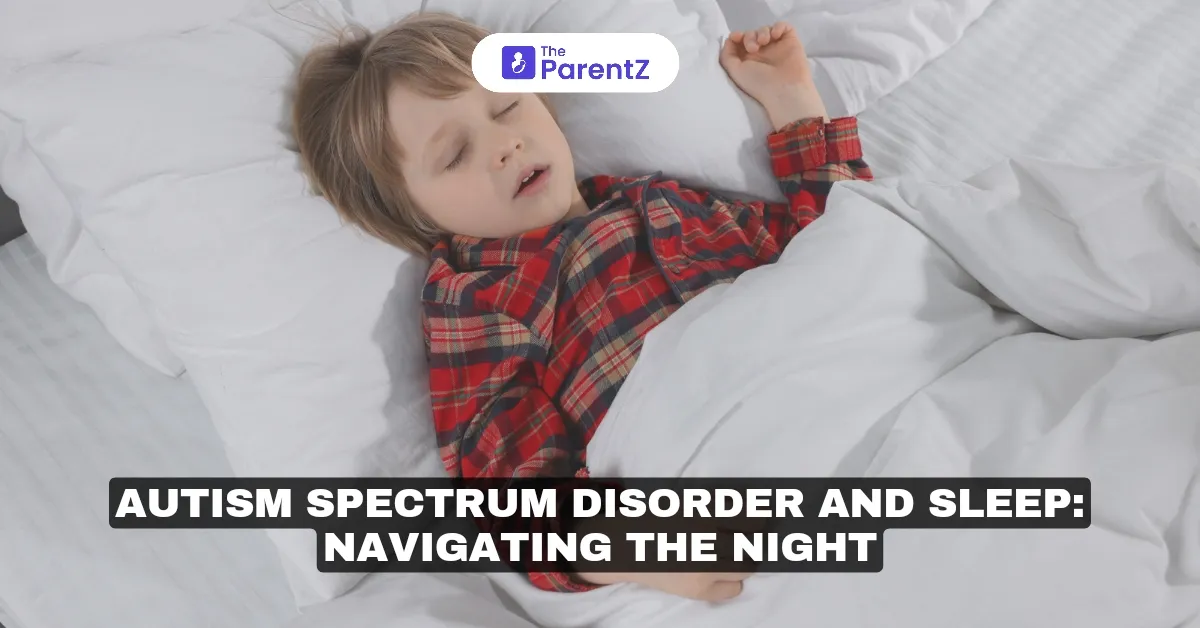As a parent of a child with Autism Spectrum Disorder (ASD), you may have noticed unique sleep patterns. Sleep disturbances are common in children with ASD, often leading to daytime fatigue, behavioral challenges, and a significant impact on family quality of life. This blog explores the intricate relationship between autism and sleep disturbances, detailing the challenges faced by children with ASD and offering solutions to help improve their sleep.
The Prevalence of Sleep Challenges in Autism
Research indicates that between 50% to 80% of children with autism experience sleep difficulties, a rate significantly higher than that of typically developing peers. Common sleep problems include:
- Difficulty falling asleep: Many children with ASD take longer than average to fall asleep, often exceeding 20 minutes.
- Frequent awakenings: Children may wake up multiple times during the night and struggle to return to sleep.
- Early morning awakenings: Waking up too early and being unable to go back to sleep is a frequent issue.
- Restless sleep: Increased movement during sleep can disrupt their rest.
- Parasomnias: Nightmares, night terrors, and sleepwalking are also prevalent among children with ASD.
These disturbances can lead to a host of negative outcomes, including increased irritability, anxiety, and behavioral problems during the day. Furthermore, parents of children with autism often report poorer sleep quality themselves due to the demands of managing their child's sleep issues.
Understanding the Causes of Sleep Challenges
Autism Spectrum Disorder (ASD) isn't just a social and communication difference—it fundamentally alters how the brain processes sensory information, regulates emotions, and manages sleep cycles. Unlike typical sleep challenges, autism-related sleep disruptions are deeply rooted in neurological variations.
- Circadian Rhythm Disruptions: Children with autism may experience irregularities in their circadian rhythms—the natural processes that regulate the sleep-wake cycle. These disruptions can be attributed to genetic factors affecting melatonin production, a hormone crucial for regulating sleep. Research has shown that many children with ASD have atypical melatonin levels, often resulting in difficulty falling asleep and waking too early.
- Sensory Sensitivities: Many kids on the autism spectrum exhibit heightened sensitivity to sensory stimuli. This can manifest as discomfort from light, sound, or touch, making it challenging for them to settle down for sleep. For instance, while most children might sleep through ambient noise or light changes, a child with ASD may awaken or resist sleep due to these stimuli.
- Coexisting Conditions: Sleep problems in children with autism are often compounded by coexisting conditions such as anxiety, depression, or ADHD. These mental health issues can exacerbate insomnia and other sleep disorders, creating a challenging cycle where poor sleep leads to increased anxiety and behavioral difficulties.
Strategies for Improving Sleep
Creating a Sensory-Friendly Sleep Environment
Children with autism often have elevated sensory sensitivities, making it crucial to create a sleep environment that minimizes discomfort. Here are some specific strategies:
- Weighted Blankets: These provide deep pressure input, which has been shown to help calm anxiety and promote relaxation. The comforting weight can make children feel secure and help them settle down more easily at night.
- Calming Colors and Decorations: Use soft, neutral colors for walls and bedding to create a soothing atmosphere. Avoid busy patterns that may be visually overstimulating.
- Blackout Curtains: Light sensitivity is common among autistic children. Blackout curtains can help eliminate external light sources that disrupt sleep.
- White Noise Machines: These devices can mask disruptive sounds from the environment, helping children sensitive to noise fall asleep and stay asleep.
Establishing a Predictable Bedtime Routine
A structured bedtime routine can significantly improve sleep quality for autistic children. Here’s how to create an effective routine:
- Visual Schedules: Use visual aids to outline the bedtime routine. This could include pictures or icons representing each step (e.g., bath time, brushing teeth, reading a story). Visual schedules help kids understand what to expect and reduce anxiety about transitions.
- Short and Relaxing Activities: Keep the bedtime routine predictable but engaging. Activities like reading a calming story, practicing deep breathing exercises, or gentle stretching can signal that it’s time to wind down without overstimulating the child.
- Limit Screen Time: Reduce exposure to screens at least one hour before bed. The devices interfere with melatonin production, making it harder for kids to fall asleep.
Behavioral Techniques
Teaching your child to fall asleep independently is important for promoting better sleep habits:
- Gradual Sleep Training: If your child struggles with falling asleep alone, consider gradual sleep training methods. Start by sitting in the room until they fall asleep, then gradually move further away each night until they can fall asleep independently.
- Bedtime Pass System: For children who frequently get out of bed, implement a bedtime pass system where they receive a limited number of "passes" they can use to leave their room after bedtime for specific reasons (e.g., needing water or using the bathroom). This helps them learn boundaries while still feeling in control.
Medical Interventions
If sleep issues persist despite implementing behavioral strategies, it may be time to consult healthcare professionals:
- Melatonin Supplements: Melatonin is often recommended for autistic children experiencing sleep difficulties. It helps regulate the sleep-wake cycle and can be particularly beneficial when taken 30 minutes before bedtime. Always consult with a pediatrician before starting any supplement regimen.
Incorporating Relaxation Techniques
Teaching relaxation techniques can help autistic children manage anxiety and prepare for sleep:
- Deep Breathing Exercises: Simple breathing techniques often help calm an anxious mind. Please encourage your child to take deep breaths in through their nose and out through their mouth, counting slowly as they do so.
- Gentle Massage or Pressure Techniques: Some children respond well to gentle massage or pressure techniques before bed. This could involve using a soft brush on their arms or legs or simply applying gentle pressure with your hands.
Conclusion
Navigating sleep challenges in autistic children requires understanding their unique sensory needs and behavioral patterns. Through these strategies, parents can significantly improve their child's sleep quality. A well-rested child is more likely to thrive socially and academically, leading to better outcomes for families.








Be the first one to comment on this story.